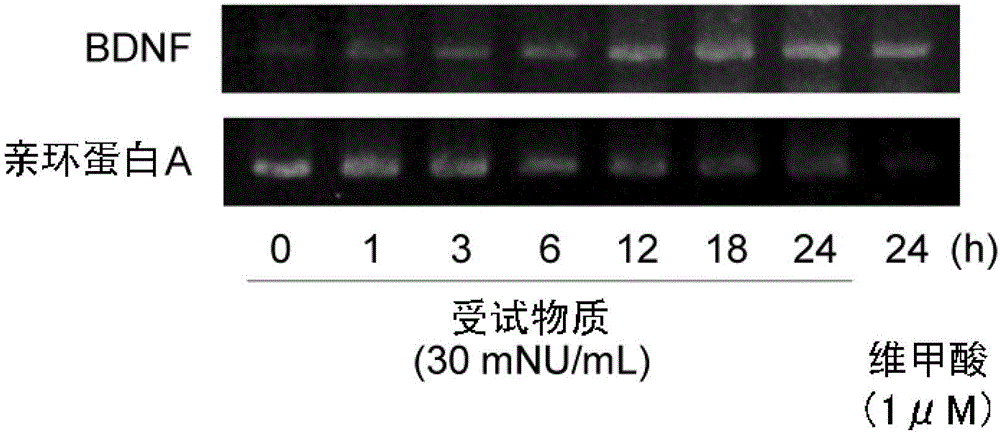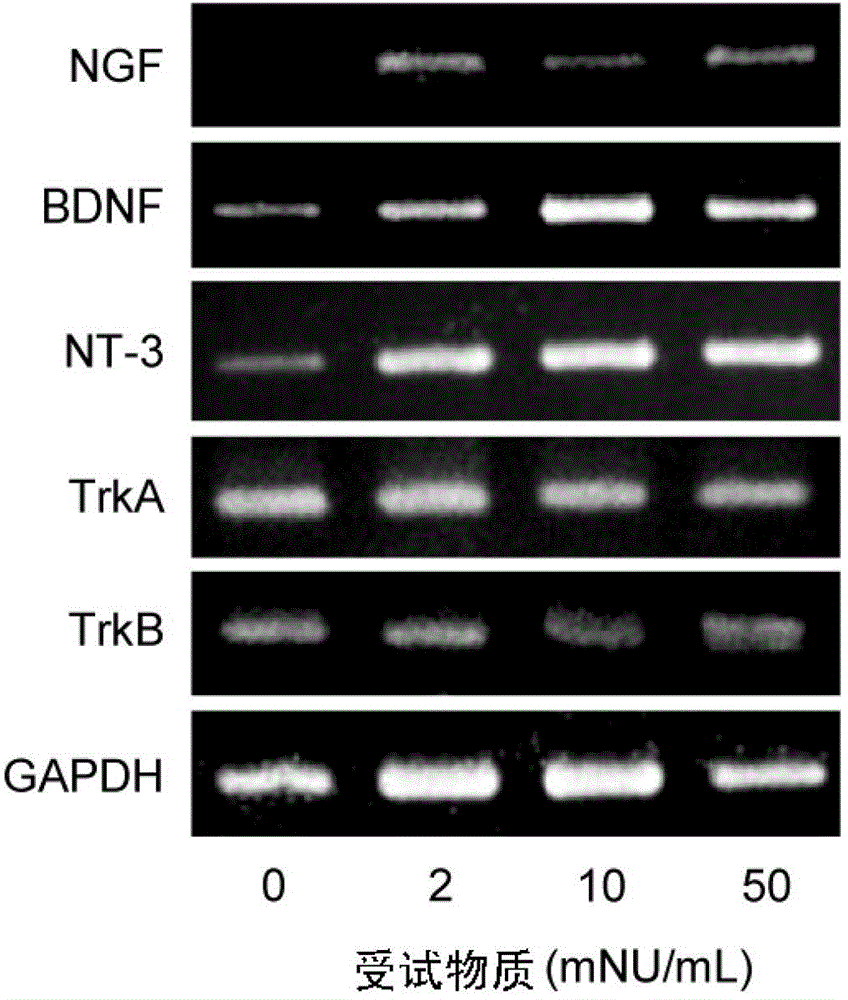Judgment or evaluation method of test substance
An evaluation method and extraction technology, applied in biochemical equipment and methods, microbial determination/testing, biological testing, etc.
- Summary
- Abstract
- Description
- Claims
- Application Information
AI Technical Summary
Problems solved by technology
Method used
Image
Examples
Embodiment 1
[0066] Inoculate vaccinia virus on the skin of healthy mature rabbits, peel off the acne-prone skin, break it up and add phenol water. Then, this was filtered under pressure, and the obtained filtrate was adjusted to pH 5 with hydrochloric acid, and then heat-treated at 90-100° C. for 30 minutes. After removing the protein by filtration, adjust the pH to 9 with sodium hydroxide, heat treatment at 90-100° C. for 15 minutes, and then filter. The filtrate was adjusted to about pH 4.5 with hydrochloric acid, 2% activated carbon was added, stirred for 2 hours and then centrifuged. Add water to the collected activated carbon, adjust the pH to 10 with sodium hydroxide, stir at 60° C. for 1.5 hours, centrifuge and filter to obtain the supernatant. Add water to the collected activated carbon again, adjust the pH to 11 with sodium hydroxide, stir at 60° C. for 1.5 hours, and centrifuge to obtain the supernatant. The two supernatants were combined, neutralized with hydrochloric acid, a...
Embodiment 2
[0068] After inoculating the skin of healthy mature rabbits with vaccinia virus to infect them, the acne-prone skin was aseptically peeled off, minced, added to glycerin water with phenol, and ground into milky form with a homogenizer. Then, this was filtered, and the obtained filtrate was adjusted to weakly acidic (pH 4.5 to 5.5) with hydrochloric acid, then heated at 100° C., and filtered. The filtrate was adjusted to be weakly alkaline (pH 8.5 to 10.0) with sodium hydroxide, then heated at 100°C and filtered. The filtrate was adjusted to about pH 4.5 with hydrochloric acid, about 1.5% activated carbon was added, stirred for 1 to 5 hours, and then filtered. Add water to the filtered activated carbon, adjust the pH to 9.4 to 10 with sodium hydroxide, filter after stirring for 3 to 5 hours, and neutralize the filtrate with hydrochloric acid.
Embodiment 3
[0070] Inoculate the skin of healthy mature rabbits with vaccinia virus, activate it, peel off the activated skin aseptically, chop it up, add water, grind it into milky form with a homogenizer. Then, this was filtered under pressure, and the obtained filtrate was adjusted to pH 5.0 with hydrochloric acid, and then heat-treated at 100° C. under steam circulation. After the protein was removed by filtration, the pH was adjusted to 9.1 with sodium hydroxide, followed by heat treatment at 100°C and filtration. The filtrate was adjusted to pH 4.1 with hydrochloric acid, 2% activated carbon was added, stirred for 2 hours and then filtered. Add 5.5% activated carbon to the filtrate again, filter after stirring for 2 hours. Water was added to the activated carbon collected by filtration, the pH was adjusted to 9.9 with sodium hydroxide, and the mixture was stirred at 60° C. for 1.5 hours and then filtered. Water was added to the first and subsequent activated carbons, adjusted to p...
PUM
 Login to View More
Login to View More Abstract
Description
Claims
Application Information
 Login to View More
Login to View More - R&D
- Intellectual Property
- Life Sciences
- Materials
- Tech Scout
- Unparalleled Data Quality
- Higher Quality Content
- 60% Fewer Hallucinations
Browse by: Latest US Patents, China's latest patents, Technical Efficacy Thesaurus, Application Domain, Technology Topic, Popular Technical Reports.
© 2025 PatSnap. All rights reserved.Legal|Privacy policy|Modern Slavery Act Transparency Statement|Sitemap|About US| Contact US: help@patsnap.com



